Indian Airforce SU-30 MKI v/s. Pakistan Airforce F-16
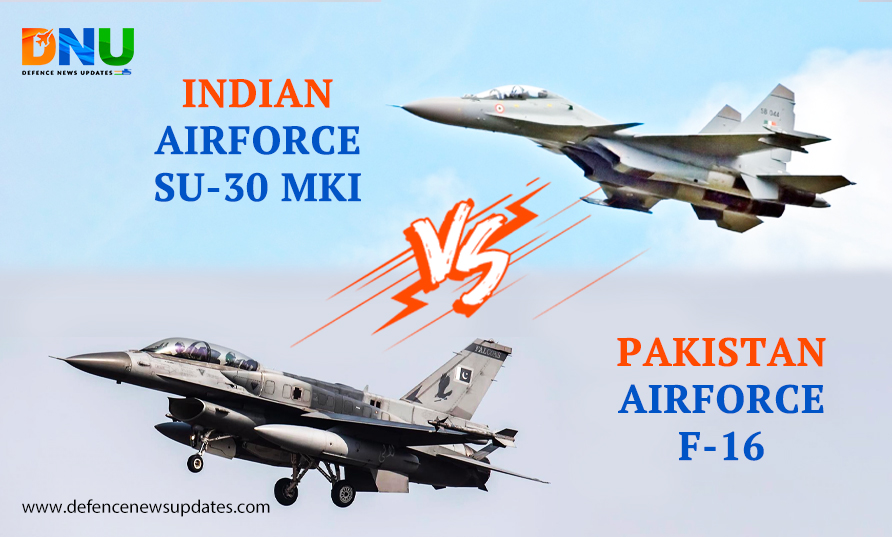
- The Indian Air Force's SU-30 MKI and the Pakistan Air Force's F-16 are both highly capable fighter jets, but they possess different strengths and capabilities.
- The SU-30 MKI is a larger and heavier aircraft compared to the F-16, giving it an advantage in terms of payload capacity and range.
Su-30MKI is a heavy-class Air Dominance Fighter with a long range, great endurance, and the ability to do more than one mission. It is the most powerful Su-27 Flanker that can be flown anywhere in the world right now. Even before any improvements, the Su-27, which was first made in the Former Soviet Union in 1982, is considered one of the best fighter planes in the world.
However, some of the technology and capabilities of the Su-30MKI have no equal in any of the world’s air forces. The Indian Air Force, which uses the Su-30MKI, can do things that no other air force will be able to do for a long time.
The Sukhoi-30 MKI has a Vympel R-77M BVR AAM missile and an NIIP NO11M Bars (Panther) combined radar sighting system. The Russian-made plane can do all the tactical jobs of the Su-24 Fencer deep interdiction tactical bomber and the Su-27 Flanker A/B/C air superiority fighter while having about twice the combat range and at least 2.5 times the combat effectiveness.
As a joke, the SU-30 is a Medium Multi-Role Combat Aircraft (MMRCA), while the Rafale is a Long-Range Air Dominance Multi-Role Combat Aircraft (LRADCMA). India needs a fleet of fighters that can fully control the air (SU-30 MKI) and take over the enemy’s ground defense system and help the Air Dominance Fleet (RAFALE from France). This is because India is at war with both Pakistan and China. India needs both the SU-30 MKI and the Rafale, but for different things.
F-16 Block 52 Aircraft Backgrounds
The American company “General Dynamics” made the F-16, and the United States Air Force (USAF) started using it in 1978. It is called an all-weather Multi Role Fighter (MRF), and it was one of the most popular aircraft designs of the 20th and 21st centuries. Over 4,500 of them were made, and they are used by more than 26 countries around the world.
The F-16C Block 50/52+ is the most recent mass-produced version of the F-16, which went into service in 2006. It has a dorsal compartment for the two-seat versions, conformal fuel tanks, improved avionics like a better radar and a helmet-mounted sight, and a more powerful engine.
F-16 vs Sukhoi-30MKI
Structure and aerodynamics of the Su-30MKI are based on the most recent study and technological advances. In the early and middle 1970s, the F-16 and F-18 were made. As with all aircraft in the Su-27 family, the Su-30MKI has the best aerodynamic efficiency in the world. It beats its foreign peers by at least 50 to 100 percent.
Because of this, the most recent modernization projects, which led to the F-16C Block 60 and F-18E/F versions, increased the size of the wing span, fuselage length, and control surface areas. They also changed the basic versions’ structural structure and layout in a big way.
All of these attackers are very similar in terms of how they normally move around. But early estimates show that the Su-30MKI’s ability to turn very quickly gives it a 30% advantage over its foes in close air combat. The problem of how to use weapons effectively is brought to the surface by aircraft that can do more than one thing. The Su-30MKI has a copilot/operator to improve the performance of the crew, make it easier to use weapons, and allow for group tasks.
The R-73E close-range air-to-air missile used with the Su-30MKI is much better than similar missiles from other countries in terms of aiming angles, maneuverability, and other factors. It is rightly called the best missile in its class in the world. The high energy and ballistic parameters of the Su-30MKI’s long-range air-to-air missiles and the power of its radar allow it to launch preventive strikes against aerial targets, including possible rivals.
The Su-30MKI fighter can successfully stop a large air attack because it has 12 weapon stores, a full set of air-to-air missiles, and the ability to shoot at multiple targets at once.
The Su-30MKI is better than the F-16 in two ways: it can carry twice as many air-to-ground guided weapons at once, and those weapons are also more effective. The Su-30MKI has high-power guided weapons that can hit targets that are deeply underground, hardened, or even superhardened.
Another thing that makes the Su-30MKI stand out is that it can do a lot of different things. It can be used as a part of air defense, as a strike plane, or as a command post in the sky. It can be used to lead fighting groups that include light fighters, making sure that everyone works together and focuses their efforts.
RADAR
F-16 Radar

The AN/APG-68 radar is a Pulse-doppler radar with a long range of up to 300 km. It was made by Westinghouse, which is now Northrop Grumman, to replace the AN/APG-66 radar in the F-16 Fighting Falcon.
The line-replaceable parts of the AN/APG-68 radar system are the antenna, Dual Mode Transmitter (DMT), Modular Low-power radio frequency (MLPRF), and Programmable Signal Processor (PSP).
The most recent change is the AN/APG-68(V)9 sensor. In addition to being able to scan farther than the previous version, it can also use SAR, which stands for synthetic aperture radar.
Su-30mki Radar
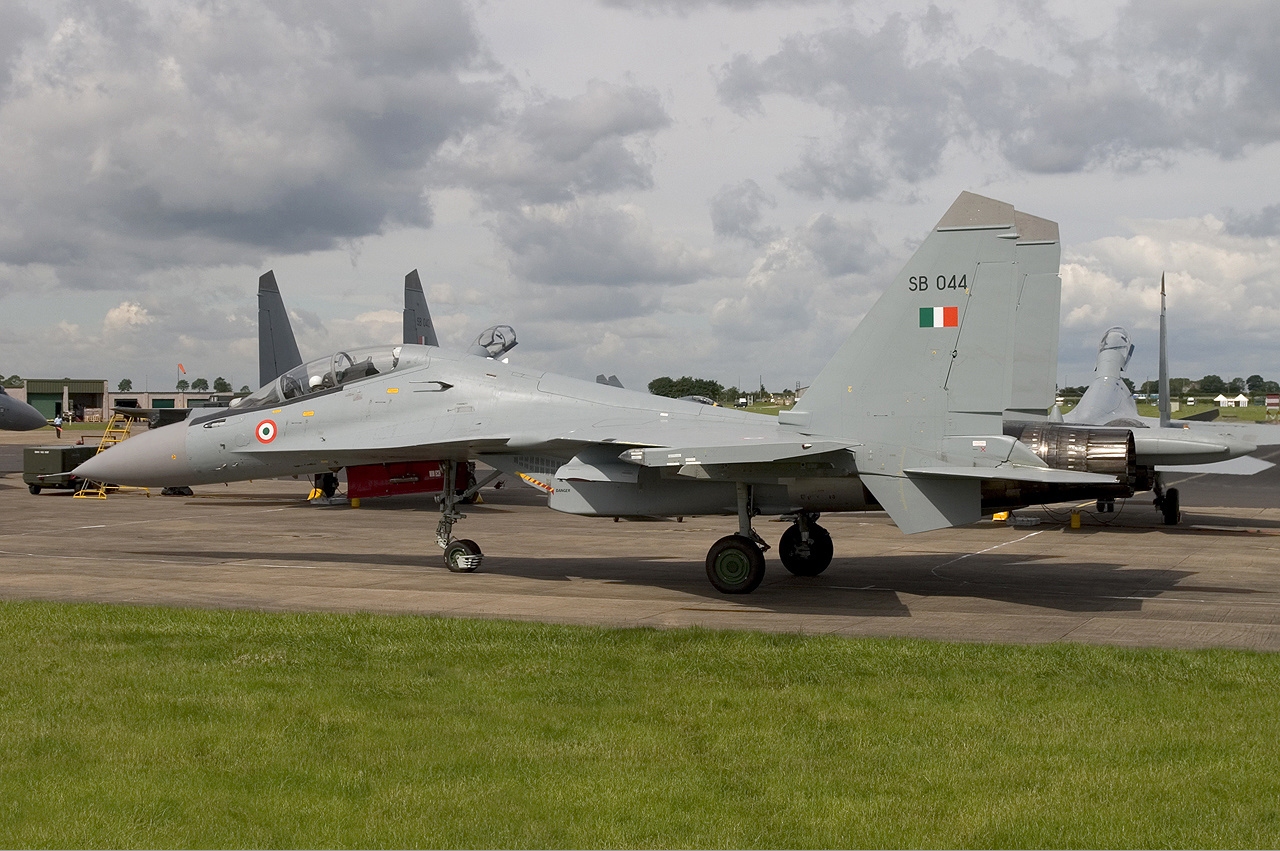
The powerful combined passive electronically scanned array radar NIIP N011M Bars (Panther) is aimed forward. The N011M is a digital radar with two frequency bands and multiple modes.
The N011M can connect to a high-precision laser-inertial or GPS guidance system and work in both air-to-air and air-to-land/sea modes at the same time. It has a modern digital system for controlling guns and features that keep it from being jammed.
N011M has a scan range of 350 km, a tracking range of up to 200 km, and a range of 60 km in the back half of the earth. The radar can keep an eye on 15 air targets and attack 4 of them at the same time. Even cruise missiles and airplanes that aren’t moving can be used as targets. The Su-30MKI can act as a mini-AWACS, directing and giving orders to other planes. The coordinates of the target can be instantly sent to at least four other planes. At 40–50 km, the radar can find things on the ground like tanks.
Air Combat-related Avionics and Weapons
Here, I’m going to compare the capabilities of both planes in terms of air battle “within visual range” (WVR) and “beyond visual range” (BVR). I’ll do this by looking at their avionics and weapons.
– COMBAT WVR: Both planes have the electronics and weapons they need to be effective in WVR combat. The RCS of the F-16C is 733% less than that of the Sukhoi-30MKI, but the Sukhoi-30MKI’s more powerful radar still lets it find the F-16C 7% or 8 km sooner. The SU-30MKI also has an IRST sensor, which comes in handy in some tactical scenarios.
“First-look, first-shot” favors the SU-30 MKI by about 10 seconds. This is based on its 8 km radar edge and the assumption that both planes are coming closer to each other at a combined speed of 3,000 kph.
Maneuverability
Both fighters are quick and good at fighting dogs.
While the F-16 is much lighter and moves faster, the Su-30MKI has TVC engines, which means that its ITR (Instantaneous Turn Rate) can be EXTREME!! The SU-30MKI’s superior agility and aerodynamic performance easily make up for the fact that it is bigger than the F-16.
In a normal one-on-one fight, the Su-30MKI would fire its BVR missiles first after seeing the F-16 coming.
FUTURE
The most recent form of the F-16 is the Block 70/72. But the US recently turned down Pakistan’s desire to buy 8 more F-16s. This makes it unlikely that Pakistan will use the latest F-16 Block 70 in the future.
On the other hand, the US is very interested in selling F-16 Block 70/72 to India. Right now, India is looking over this plan, and we may hear more in the future.
The SU-30MKI will be upgraded to “Super Sukhoi” level, which will be much more advanced than the current SU-30MKI. It will be able to carry a nuclear bomb and a Brahmos missile. The details of the “Super Sukhoi” are still being talked about between India and Russia.
A BRUSH WITH THE ENEMY ::
During the Kargil War, IAF MiG-29s from the 47 (Black Archers) Squadron followed two PAF F-16s that were close to Indian air space.
The MiG-29s with long-range BVRs (beyond visual range) were able to lock on to the Pakistani F-16s that didn’t have BVRs.
The planes were still flying on their side of the line, so they were not shot down.
The Pakistani F-16s finally gave up and went back to their base. They did not dare go up against the IAF Mig-29s.

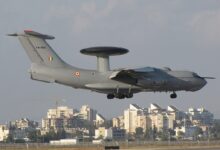
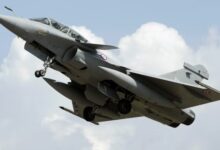
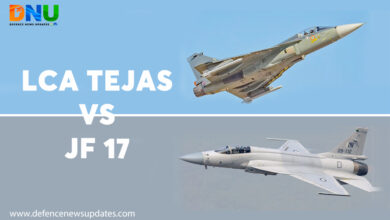



Facebook Comments